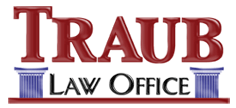The value of any real property as of a given date is subject to widely differing opinions. If there is no market for the property, it should be valued at (a) the highest price available, or (b) the amount it will bring as salvage, whichever is greater. If there is a market for real property held by the estate, the factors that you (and/or a professional appraiser) should consider are the following:
- The nature and condition of the property, its physical qualities and defects, and the adequacy or inadequacy of its improvements
- The size, shape, and location of the property
- The actual and potential use of the property and how it is affected by development trends and economic conditions (Is the neighborhood getting better or worse?)
- How suitable the property is for its actual or intended use
- Changes in zoning restrictions
- The size, age, and condition of the buildings (degree of deterioration or obsolescence)
- The market value of other properties in the same area
- The value of the net income realized from the property (Rentals are often capitalized, which means the value of the rent is projected to derive a value for the asset. For example, a building that yields $10,000 a year in net rentals probably is worth some multiple of $10,000, such as five times. Once rental has been capitalized, it must be adjusted for depreciation.)
- Prices at which comparable property in the same area was sold at a time near the applicable valuation date (providing it was an arm’s-length transaction for the best price obtainable)
- How much it would cost to duplicate the property after taking depreciation into account (Your appraiser must separate the cost or value of land from the total value. The cost of reproducing the building, using present cost figures, has to be estimated, and then the loss in value due to depreciation is subtracted from the total of the other two figures.)
- Unusual facts
If property in the estate is sold within a reasonable time after death, the IRS usually accepts the amount received as its value. This assumes, however, that it was sold in an arm’s length transaction. If property is sold at auction, the price is generally accepted if it appears that no other method would have resulted in a higher price.
Land may have substantial value for federal and state death-tax purposes even though it doesn’t produce income and even though there is no active market. If land is in or adjacent to a settled community (such as at the edge of an expanding shopping center), it might be worth far more to the shopping-center developer than to a potential buyer in the residential market. Real estate, just like all other assets, must be valued at its “highest and best use” price rather than at the lowest figure the property might bring.
Special Valuation of Certain Farm and Certain Business Real Property
Let’s assume the decedent was a farmer. Let’s also assume that the farmland is surrounded by new housing developments. The estate-tax value of the land as farmland might be considerably lower than the value of the land if it were subdivided and used for single-family dwellings. The tax law allows you to value farmland (and certain business real property) at its “special use” value. For example, you could value farmland as such rather than as land subdivided and developed.
Essentially, the requirements for special-use valuation are the following:
- On the date the decedent died, the property must be in use as a farm for farming purposes or in a trade or business other than farming.
- The property must make up a significant portion of the decedent’s gross estate.
- The property must pass to a “qualified heir” — a member of the family, an ancestor, a lineal descendant, the spouse, the spouse of a descendant, or a lineal descendant of a grandparent.
- The property must have been owned by the decedent or a member of her family and been used a farm or closely held business for at least five of the eight years prior to death; during that time the decedent or a member of her family must have been materially involved in the operation of the farm or other business.
You can choose one of the various formulas to reduce the values of the farmland from its “highest and best use” value (such as the price a developer might pay) to its value as farm (or business) real property.
If there is no comparable land, or if you choose to value the farm in the same way you might value qualifying closely held business real estate, do one or more of the following:
- Capitalize the income that the property can be expected to yield for farming purposes over a reasonable period of time under prudent management using traditional cropping patterns for the area (taking into account soil capacity, terrain configuration, and other relevant factors).
- Compare sale prices of other farms or closely held business land in the same geographical area but far enough removed from metropolitan resort areas to eliminate nonagricultural use as a significant factor in the sale price.
- Consider any other factor that fairly values the farm (or closely held business) property.
Watch out for recapture of the tax benefit: If, within ten years after the decedent’s death and before the death of the “qualified heir,” the heir disposes of it (by selling or giving it to someone outside the family) or no longer uses it as a farm or for business purposes, the estate-tax benefit because of the lower valuation is “recaptured.” The tax savings is lost and all the tax that would have been paid by choosing the “highest and best use” valuation must now be paid.
